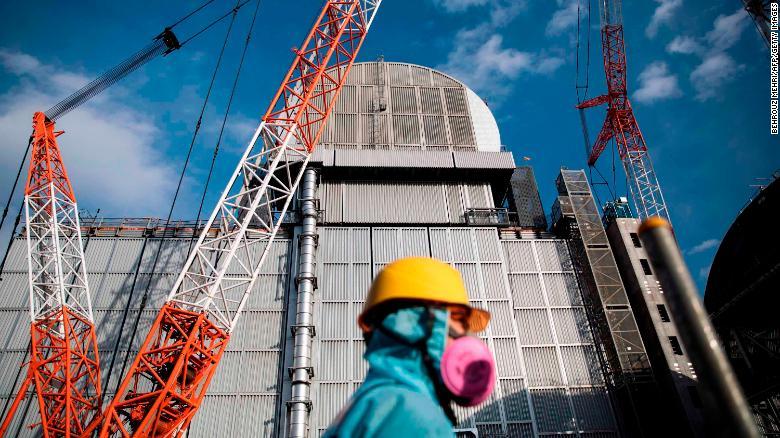Seoul summons Japanese envoy over radioactive water disposal plan
By Park Han-naPublished : Aug. 19, 2019 - 17:45
South Korea’s Foreign Ministry on Monday sought a detailed explanation on Japan’s reported plan to release radioactive water from the 2011 Fukushima nuclear plant meltdown, while expressing safety concerns.
Climate, Environment, Science and Foreign Affairs Director Kwon Se-jung summoned Tomofumi Nishinaga, economic counselor at the Japanese Embassy here, to convey the government’s concerns on the possible disposal of contaminated water.
“Our government very gravely recognizes the impact that the discharge of contaminated water from the Fukushima plant may have on the health and safety of both countries’ citizens, and by extension on all countries along the ocean side,” the ministry said in a press release.
Climate, Environment, Science and Foreign Affairs Director Kwon Se-jung summoned Tomofumi Nishinaga, economic counselor at the Japanese Embassy here, to convey the government’s concerns on the possible disposal of contaminated water.
“Our government very gravely recognizes the impact that the discharge of contaminated water from the Fukushima plant may have on the health and safety of both countries’ citizens, and by extension on all countries along the ocean side,” the ministry said in a press release.

“The government also requested that the Japanese government more transparently and specifically explain to the international community related measures, including how it will handle the Fukushima nuclear reactor,” it added.
With growing fears that Tokyo could dispose of the radioactive water in the Pacific Ocean as storage space at the Fukushima plant is expected to run out by 2020, Seoul pledged to address the issue last week.
Tensions between the two countries have been ratcheting up in recent months after Tokyo implemented export restrictions against Seoul likely to hurt the economy here.
Raising the sensitive issue of contaminated water from the Fukushima plant is seen as a move by Korea to put pressure on Japan.
Kwon pointed out Japan’s lack of detailed updates regarding the issue and demanded Japan verify related reports from media and environmental groups and claims on the discharge plan, and clarify its future disposal scheme.
Nishinaga said that he would relay Seoul’s position to Tokyo and said his country would faithfully and transparently offer information related to its handling of the Fukushima plant water, the ministry said.
In a January report, Greenpeace said that a Japanese government task force proposed the discharge plan and ignored alternative options that would avoid further contamination of the ocean.
According to a Foreign Ministry official, the Japanese envoy said the report from Greenpeace differs from the Japanese government’s position.
Three reactors at the Fukushima plant suffered meltdowns after a 2011 earthquake and tsunami shut down the plant’s cooling systems.
Since then, Japan has been cleaning water that has come into contact with highly radioactive melted fuel debris and storing it in massive tanks.
The water treatment system the country utilizes removes most radionuclides but not tritium. Exposure to tritium-tainted water can pose a health risk.
The plant sees an increase of contaminated water by 170 tons a day and its storage is projected to reach full capacity by around 2022, leading the country to seek ways to dispose the water.
Currently, Japan is known to be considering six options to disperse a buildup of contaminated water, including evaporation of the water and injection deep underground. Releasing the treated water into the ocean is regarded as the cheapest and most convenient method, according to the official.
The desired option for Seoul is that Japan keep the tainted water in storage tanks for a long time, but that has certain limits due to the given size of the plant site to fit more tanks.
(hnpark@heraldcorp.com)


![[AtoZ into Korean mind] Humor in Korea: Navigating the line between what's funny and not](http://res.heraldm.com/phpwas/restmb_idxmake.php?idx=644&simg=/content/image/2024/04/22/20240422050642_0.jpg&u=)

![[Exclusive] Korean military set to ban iPhones over 'security' concerns](http://res.heraldm.com/phpwas/restmb_idxmake.php?idx=644&simg=/content/image/2024/04/23/20240423050599_0.jpg&u=20240423183955)

![[Herald Interview] Why Toss invited hackers to penetrate its system](http://res.heraldm.com/phpwas/restmb_idxmake.php?idx=644&simg=/content/image/2024/04/22/20240422050569_0.jpg&u=20240422150649)
![[Graphic News] 77% of young Koreans still financially dependent](http://res.heraldm.com/phpwas/restmb_idxmake.php?idx=644&simg=/content/image/2024/04/22/20240422050762_0.gif&u=)







![[Exclusive] Korean military to ban iPhones over security issues](http://res.heraldm.com/phpwas/restmb_idxmake.php?idx=652&simg=/content/image/2024/04/23/20240423050599_0.jpg&u=20240423183955)



![[Today’s K-pop] Ateez confirms US tour details](http://res.heraldm.com/phpwas/restmb_idxmake.php?idx=642&simg=/content/image/2024/04/23/20240423050700_0.jpg&u=)